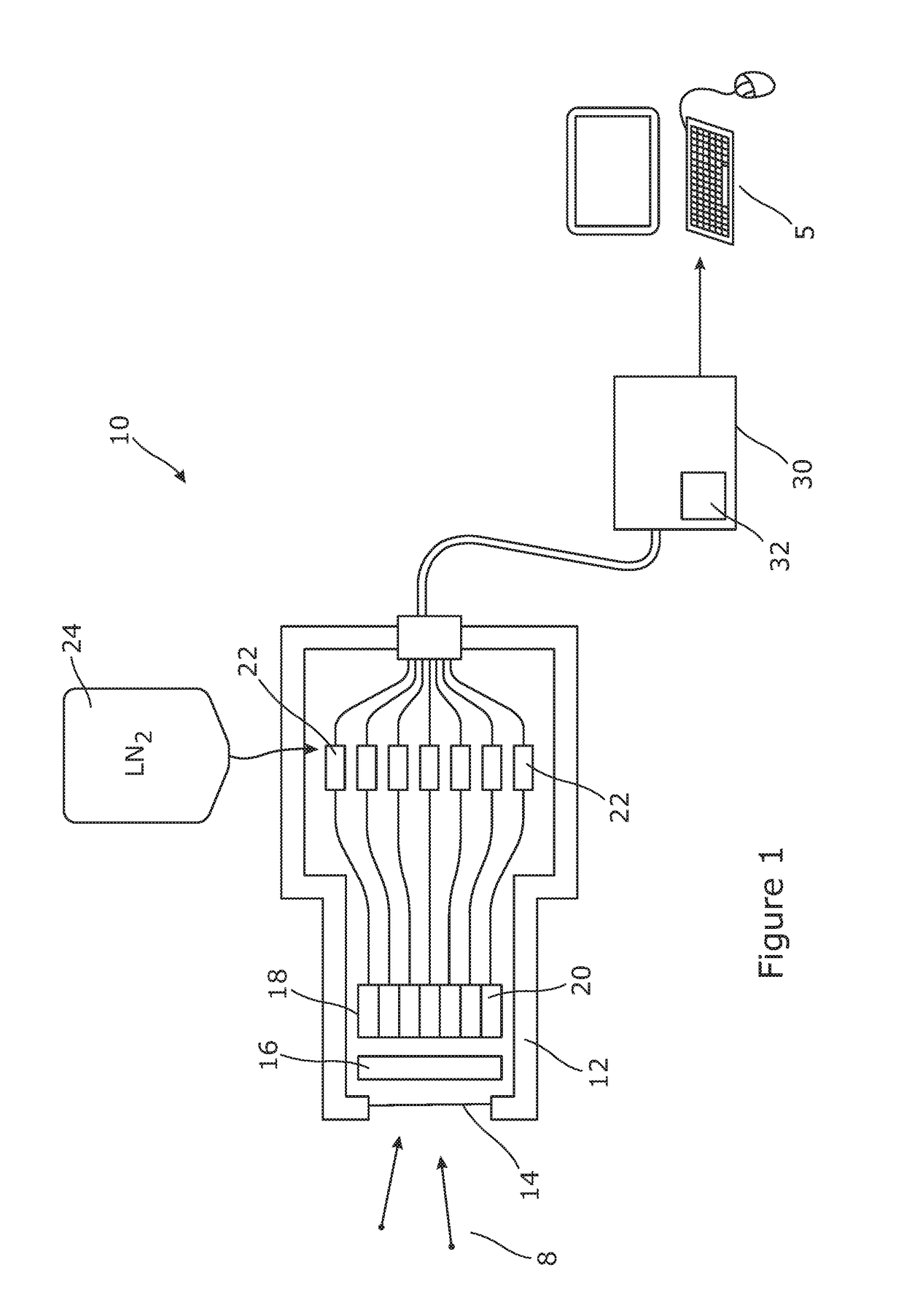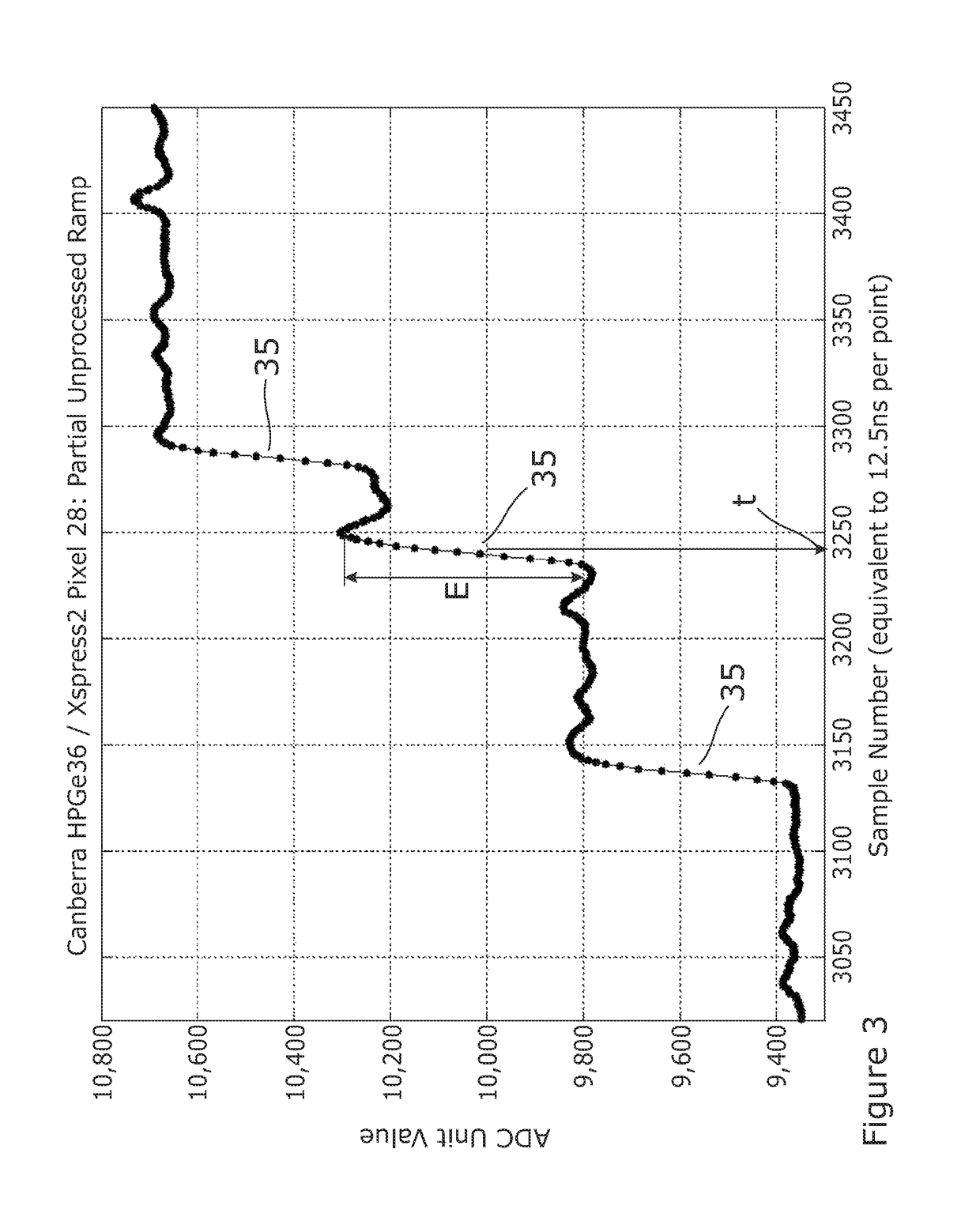Analysis of signals from pixellated detectors of ionizing radiation
a technology of ionizing radiation and detectors, applied in radiation measurement, instruments, measurement devices, etc., can solve the problems of compromising the rate resolution performance of fluorescence spectroscopy detectors, and degrading performance, so as to achieve the effect of compromising the rate resolution performance and degrading performan
- Summary
- Abstract
- Description
- Claims
- Application Information
AI Technical Summary
Benefits of technology
Problems solved by technology
Method used
Image
Examples
Embodiment Construction
[0038]FIG. 1 presents a schematic view of an apparatus 10 for detecting particles or photons of ionizing radiation 8. The apparatus comprises a vacuum chamber 12 having a window 14 permitting particles or photons of ionizing radiation such as X-rays or Gamma rays to enter and strike a semiconductor detector 18. The semiconductor detector comprises a plurality of pixels 20, each pixel being arranged to output an electrical signal comprising a series of event features, each event feature representing a response of the pixel to a particle or photon of ionizing radiation striking that pixel. Each such event feature exists as an interval of the time varying signal from the pixel, for example as a continuous electrical signal, or as a time series of voltage or current values sampled from such an electrical signal. The pixels may be arranged in a two dimensional rectilinear array or in other ways.
[0039]The apparatus 10 may also comprise a collimator 16 to collimate the ionizing radiation i...
PUM
 Login to View More
Login to View More Abstract
Description
Claims
Application Information
 Login to View More
Login to View More - R&D
- Intellectual Property
- Life Sciences
- Materials
- Tech Scout
- Unparalleled Data Quality
- Higher Quality Content
- 60% Fewer Hallucinations
Browse by: Latest US Patents, China's latest patents, Technical Efficacy Thesaurus, Application Domain, Technology Topic, Popular Technical Reports.
© 2025 PatSnap. All rights reserved.Legal|Privacy policy|Modern Slavery Act Transparency Statement|Sitemap|About US| Contact US: help@patsnap.com



